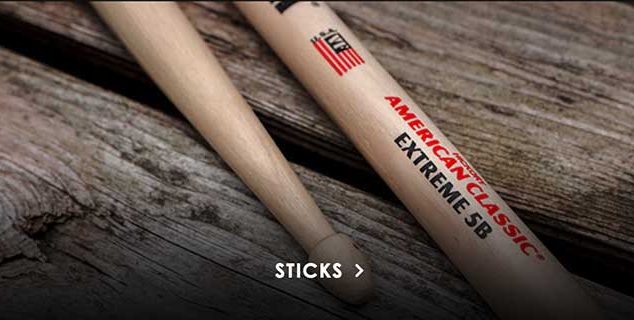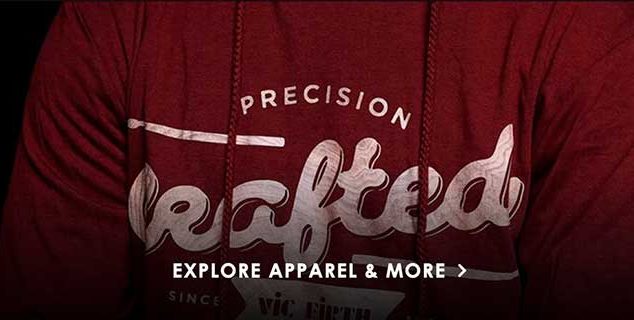CONCERT SNARE DRUM

This series of videos will cover all of the fundamentals for concert snare drum maintenance, tuning, stick and implement selection and playing techniques.
To get the most out of the content available, we recommend that you download and print a copy of the Percussion 101 Snare Drum Study Guide and fill out the questions as you watch the videos. The questions in the study guide are listed in the order of the content presented in the videos.
After watching the videos and filling out the study guide, you’re ready to test your knowledge by taking our online quiz! The questions and answers on the test randomized and may have slightly different language than the study guide, so we recommend reviewing the material BEFORE attempting the quiz!
Ready to get started?
Download the Percussion 101: Concert Snare Drum Study Guide
Watch the videos below
After you've watched the video, see if you can answer these questions:
1. What is a typical shell depth for a concert snare drum?
2. Is a marching snare with kevlar heads a good substitute for a field drum in a concert setting? Why or why not?
3. What type of batter head produces a characteristic sound for a concert snare drum?
4. Why is it important to have a specially designed head for the snare bottom?
After you've watched the video, see if you can answer this question:
What are good maintenance routines that should be performed on a concert snare?
After you've watched the video, see if you can answer these questions:
1. Why is it important to “seat” the drum head before you begin tuning a drum?
2. Describe each step of the tuning process.
3. What is the best string to use on the snare strainer?
4. What is the best way to determine the correct tension on the snares?
After you've watched the video, see if you can answer these questions:
Which are the recommended beating areas on a snare drum?
Which areas do not produce a good characteristic sound?
After you've watched the video, see if you can answer these questions:
Name the checkpoints for the proper playing position.
What are common problems to avoid?
After you've watched the video, see if you can answer these questions:
Describe the matched grip and position of the sticks on the drum.
Describe the disadvantages to using the traditional grip?
After you've watched the video, see if you can answer this question:
Describe the fundamentals of producing a legato or rebound stroke.
After you've watched the video, see if you can answer these questions:
1. What role does the fulcrum play in determining the length of a multiple bounce?
2. Describe the fundamentals behind producing a good multiple bounce roll.
3. What is a common problem with developing a good double bounce roll?
After you've watched the video, see if you can answer this question:
What is a factor when determining the appropriate hand speed for an un-metered roll?
After you've watched the video, see if you can answer this question:
Explain what you should and should not do when playing untied rolls.
After you've watched the video, see if you can answer these questions:
1. Detail the fundamental techniques for producing a good single hand and alternating flams.
2. Describe the grace note height on soft or half height flams.
After you've watched the video, see if you can answer these questions:
1. Name the advantages and disadvantages for using the lead hand sticking method.
2. Name the advantages and disadvantages for using natural or alternating sticking method.
After you've watched the video, see if you can answer these questions:
1. Describe the fundamentals in producing a multiple bounce ruff.
2. When are double bounce ruffs (open/rudimental ruffs) most appropriate?
3. What are the important considerations on ruffs which have more than 2 grace notes?
4. Is a five stroke ruff and a five stroke roll the same thing? Why or why not?
After you've watched the video, see if you can answer these questions:
Name each of the alternative implements described in this video and what sounds they produce.
ESSENTIAL STICKS FOR THE CONCERT PERCUSSIONIST
TAKE THE ONLINE QUIZ TO TEST YOUR KNOWLEDGE!
PLAYER FAVORITES:
TEACHERS:
Vic Firth’s Percussion 101 and online tests are a great resource to implement in YOUR curriculum. Please take a moment to read the FAQ to find out more!
The PERCUSSION 101 project is a series of video lessons that provide students and instructors alike with a comprehensive introduction to the fundamental techniques for the most common percussion instruments.
The curriculum for this series was compiled by members of Vic Firth’s Collegiate Educator Program which includes some of the most influential university instructors in the country. The series covers instrument characteristics, maintenance routines, tuning, mallet selection and general playing techniques on the instruments. In addition, rehearsal techniques & exercises will help you to develop a great fundamental percussion program.
This project was originally developed for use in the college percussion methods class – to serve as instruction for non-percussionists who will be charged with teaching percussion in the schools. It quickly developed into a resource to find quick answers to common questions after these students went in the field.
After we began to see what a truly valuable resource this was, we began to integrate study guides and online tests so that percussion students could also take advantage of the information. After all, how much time do you REALLY have in your classroom or private lesson studio to cover all of the percussion instruments fully? Generally, we fix the problems with gaps in knowledge as they occur instead of proactively covering all of our basics!
Whether you are a college percussion methods instructor, a band or orchestra director or a private percussion lesson teacher, we’ve made this resource a valuable “HANDS-OFF” teaching resource! The information for all of the instruments is presented in a series of videos which cover all the fundamentals, so student can watch on their own. Here are some recommendations for implementing this in your curriculum:
AS HOMEWORK ASSIGNMENT OR CLASSROOM ACTIVITY: On each instrument “module”, there is a STUDY GUIDE that students can download. This study guide will keep them on-task by asking simple questions on information that was included in the video (in sequential order). Simply assign an instrument to the student (giving him or her the appropriate link on our website), hand them a printed study guide, then collect the study guide as proof that they watched the videos!
AS A TEST: We have constructed a TEST based on the Study Guide (with the questions mixed up and slightly altered). Obviously would like to avoid letting students download the test itself. Send us a note and we’ll be happy to email you a PDF copy that you can print and use in your classroom (to keep students from requesting the test, please email us from a school or ISD email account).




